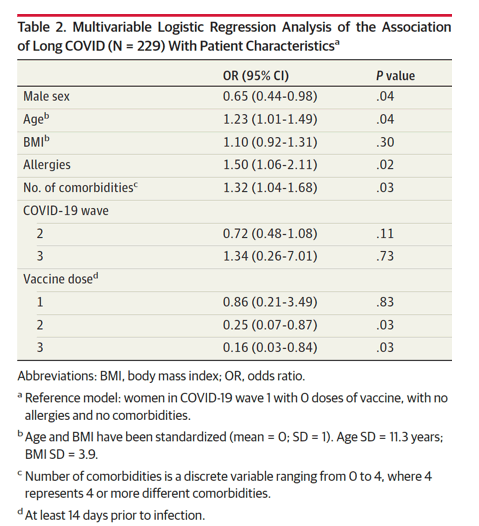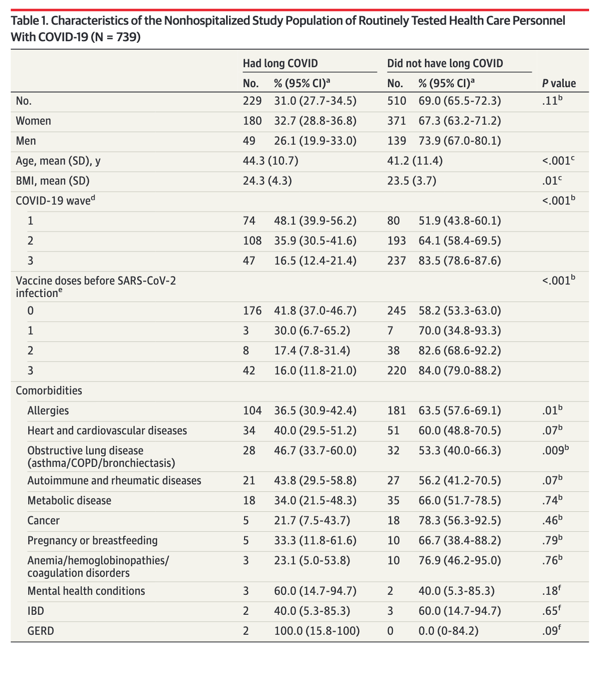| |
Association Between BNT162b2 Vaccination and Long COVID After Infections Not Requiring Hospitalization in Health Care Workers
|
| |
| |
Download the PDF here
July 1 2022
The number of vaccine doses was associated with lower long COVID prevalence: 41.8% (95% CI, 37.0%-46.7%) in unvaccinated patients, 30.0% (95% CI, 6.7%-65.2%) with 1 dose, 17.4% (95% CI, 7.8%-31.4%) with 2 doses, and 16.0% (95% CI, 11.8%-21.0%) with 3 doses. Older age, higher body mass index, allergies, and obstructive lung disease were associated with long COVID.
In this longitudinal observational study conducted among health care workers with SARS-CoV-2 infections not requiring hospitalization, 2 or 3 doses of vaccine, compared with no vaccination, were associated with lower long COVID prevalence. Study limitations include that symptoms and duration were self-reported, and causality cannot be inferred.
With a reference group of unvaccinated females in wave 1 with no allergies or comorbidities (Table 2), male sex (odds ratio [OR], 0.65; 95% CI, 0.44-0.98, P = .04), 2 vaccine doses (OR, 0.25; 95% CI, 0.07-0.87, P = .03), and 3 vaccine doses (OR, 0.16; 95% CI, 0.03-0.84, P = .03) were associated with a lower probability of long COVID. Older age (OR, 1.23; 95% CI, 1.01-1.49, P = .04), allergies (OR, 1.50; 95% CI, 1.06-2.11, P = .02), and an increasing number of comorbidities (OR, 1.32; 95% CI, 1.04-1.68, P = .03) were associated with a higher probability. No statistically significant association with infection wave was found. Among vaccinated individuals (n = 265), time between the second vaccination dose and infection was not associated with long COVID (OR, 0.66; 95% CI, 0.34-1.29).


|
|
| |
| |
|
|
|